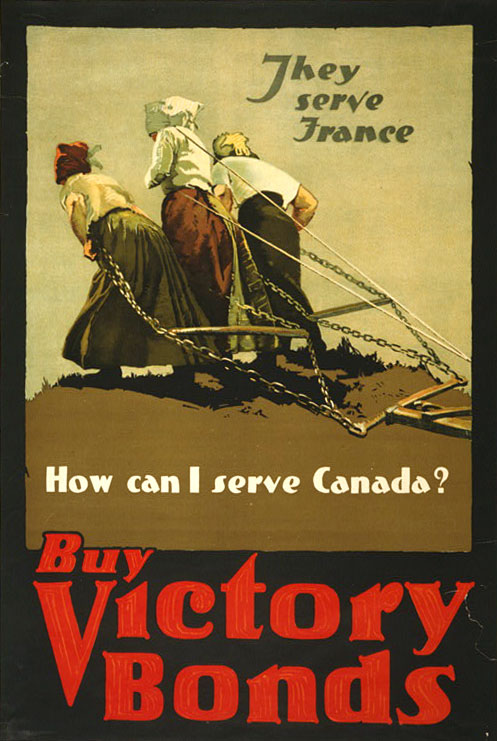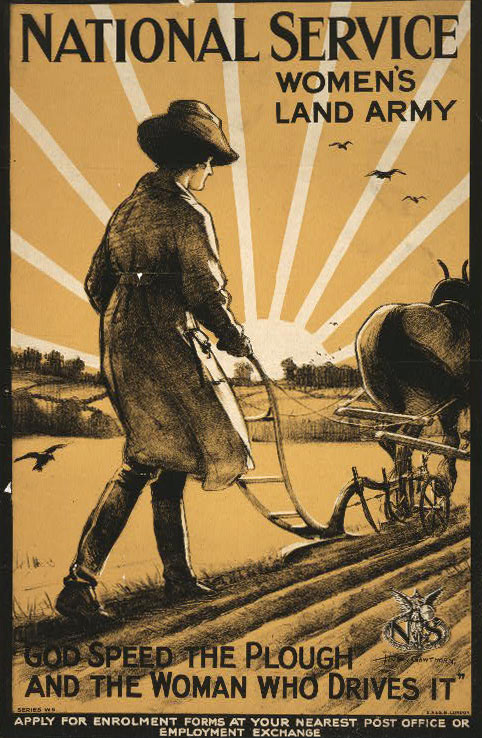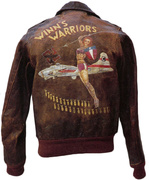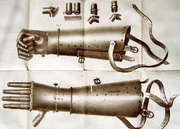
Armistice Day is a time to reflect upon that defining moment at the end of World War I, at 11 a.m. on November 11, 1918, when soldiers stopped shooting at each other along Europe’s Western Front. At its close, most observers assumed that nothing would ever match the “Great War” for its sheer volumes of death and destruction, and for decades after, people around the world stopped whatever they were doing at that hour to observe two minutes of silence in a mute echo of the quiet that must have blanketed the battlefield. As the world soon learned, the sadly quaint practice of holding one’s tongue for 120 seconds, once a year, would not be enough: After World War II, the holiday’s name was changed in the United States to Veterans Day, while countries in the British Commonwealth observed Remembrance Day.
Looking back on the recruiting posters from that war, it’s interesting to note how portrayals of women and children, as well as the comforts of home, were used to essentially guilt-trip able-bodied men into enlisting for a tour of duty in the trenches. In the United States, women were generally depicted as the ones who’d keep the home fires burning while their sons and husbands were fighting the good fight “over there.” Less passive were the depictions of women in France, whose sacrifices were often used to literally shame men into doing their duty. In retrospect, the portrayal of World War I-era women is not as glamorous as that of the Rosie the Riveters in World War II, but their role in the conflict from a propaganda standpoint was every bit as vital to the war effort, as shown in these posters from the U.S. Library of Congress.
























 Guts and Gumption: Vietnam Helicopter Pilots Wore Their Hearts on Their Helmets
Guts and Gumption: Vietnam Helicopter Pilots Wore Their Hearts on Their Helmets
 WWII War Paint: How Bomber-Jacket Art Emboldened Our Boys
WWII War Paint: How Bomber-Jacket Art Emboldened Our Boys Guts and Gumption: Vietnam Helicopter Pilots Wore Their Hearts on Their Helmets
Guts and Gumption: Vietnam Helicopter Pilots Wore Their Hearts on Their Helmets War and Prosthetics: How Veterans Fought for the Perfect Artificial Limb
War and Prosthetics: How Veterans Fought for the Perfect Artificial Limb Military Posters and PropagandaWWI Propaganda Posters
During World War I, the U.S. government, contractor…
Military Posters and PropagandaWWI Propaganda Posters
During World War I, the U.S. government, contractor… World War OneWorld War I coincided with numerous advances in technology, resulting in th…
World War OneWorld War I coincided with numerous advances in technology, resulting in th… Mari Tepper: Laying it on the Line
Mari Tepper: Laying it on the Line Nice Ice: Valerie Hammond on the Genteel Charm of Vintage Canadian Costume Jewelry
Nice Ice: Valerie Hammond on the Genteel Charm of Vintage Canadian Costume Jewelry How Jim Heimann Got Crazy for California Architecture
How Jim Heimann Got Crazy for California Architecture Modernist Man: Jock Peters May Be the Most Influential Architect You've Never Heard Of
Modernist Man: Jock Peters May Be the Most Influential Architect You've Never Heard Of Meet Cute: Were Kokeshi Dolls the Models for Hello Kitty, Pokemon, and Be@rbrick?
Meet Cute: Were Kokeshi Dolls the Models for Hello Kitty, Pokemon, and Be@rbrick? When the King of Comedy Posters Set His Surreal Sights on the World of Rock 'n' Roll
When the King of Comedy Posters Set His Surreal Sights on the World of Rock 'n' Roll How One Artist Makes New Art From Old Coloring Books and Found Photos
How One Artist Makes New Art From Old Coloring Books and Found Photos Say Cheese! How Bad Photography Has Changed Our Definition of Good Pictures
Say Cheese! How Bad Photography Has Changed Our Definition of Good Pictures Middle Earthenware: One Family's Quest to Reclaim Its Place in British Pottery History
Middle Earthenware: One Family's Quest to Reclaim Its Place in British Pottery History Fancy Fowl: How an Evil Sea Captain and a Beloved Queen Made the World Crave KFC
Fancy Fowl: How an Evil Sea Captain and a Beloved Queen Made the World Crave KFC
Great group of posters. I’m reblogging this for Veteran’s Day.
Fascinating. The Enlist one I was familiar with, but many of the others I had never seen before.
Just shows how the lies are still the same. The wealthy conning the poor to die in order to maintain the wealthy in their mansions.
Wonderful posters, but I cannot see anyone wanting to defend the EU in the same way these days.
My question would be to keith b … are you or have you ever served your country … because my father served in WWI and WWII, and my husband served some 3-1/2 yrs. in the jungles of the Philippines during WWII, and I resent your comment about the “wealthy conning the poor to die” … these brave men chose to defend their country, WHEN THERE WAS A DRAFT, just as the young men and women do today … WHEN THERE IS NO DRAFT, BUT A VOLUNTEER SERVICE.
Sorry Nana, I’m with keith b on this one, wars emerge when the private super rich want something from another country, and use trade wars, sanctions then hot wars to get it. They shamed people in the olden days into leaving their families and going off to kill someone that they’d probably get on very well with. Now that there’s no deference, they just do it anyway. Iraq 03. Drill down, you’ll find most wars are about finance and resources.